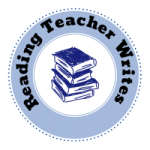 I’m catching up this week — finishing Maybe He Just Likes You by Barbara Dee (SO needed in our middle schools and high schools) and Things You Can’t Say by Jenn Bishop.
I’m catching up this week — finishing Maybe He Just Likes You by Barbara Dee (SO needed in our middle schools and high schools) and Things You Can’t Say by Jenn Bishop.
I am gathering more wordless picture books right now for various uses. The Fisherman & the Whale by Jessica Lana is an important book about humans taking care of the animals of the world, and how humans can show more empathy in the middle of struggle.
 The Hero Next Door is the newest #WNDB (We Need Diverse Books) collection, and it’s a good one! The school library has it now. I’m sure it will be checked out by tomorrow afternoon.
The Hero Next Door is the newest #WNDB (We Need Diverse Books) collection, and it’s a good one! The school library has it now. I’m sure it will be checked out by tomorrow afternoon.
It’s Monday! What are YOU reading?
It’s Monday! What are you Reading? is a meme hosted by Kathryn at Book Date. It is a great way to recap what you read and/or reviewed the previous week and to plan out your reading and reviews for the upcoming week. It’s also a great chance to see what others are reading right now…you just might discover your next “must-read” book!
Kellee Moye, of Unleashing Readers, and I decided to give It’s Monday! What Are You Reading? a kidlit focus. If you read and review books in children’s literature – picture books, chapter books, middle grade novels, young adult novels, anything in the world of kidlit – join us! We love this meme and think you will, too. We encourage everyone who participates to visit at least three of the other kidlit book bloggers that link up and leave comments for them.








You must be logged in to post a comment.